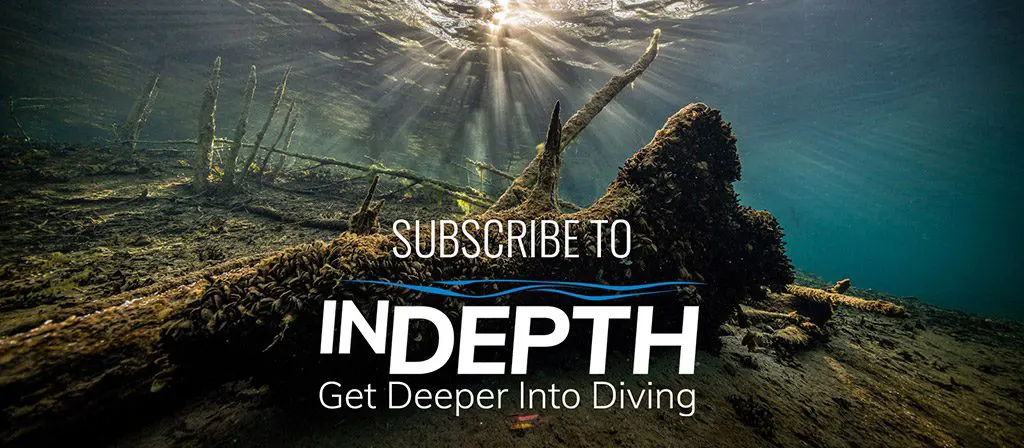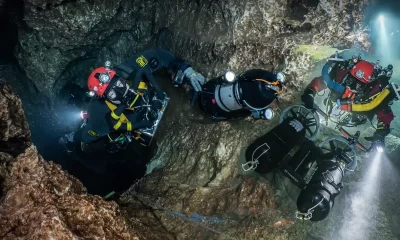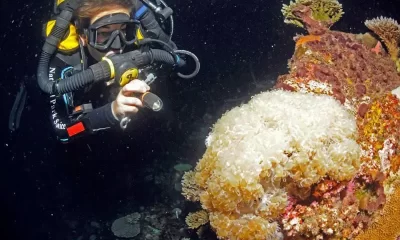Exploration
Stefano Carletti: The Man Who Immortalized The Wreck of the Andrea Doria
Poetic Italian explorer and instructor Andrea Murdock Alpini reveals the inside story of Italian adventurer Stefano Carletti, who wrote the first book—Andrea Doria – 74—on the wreck of the Doria. Carletti penned his work after participating in the first expedition to film the failed luxury liner in 1968, led by Italian cinematographer Bruno Vailati, along with cameraman Al Giddings.
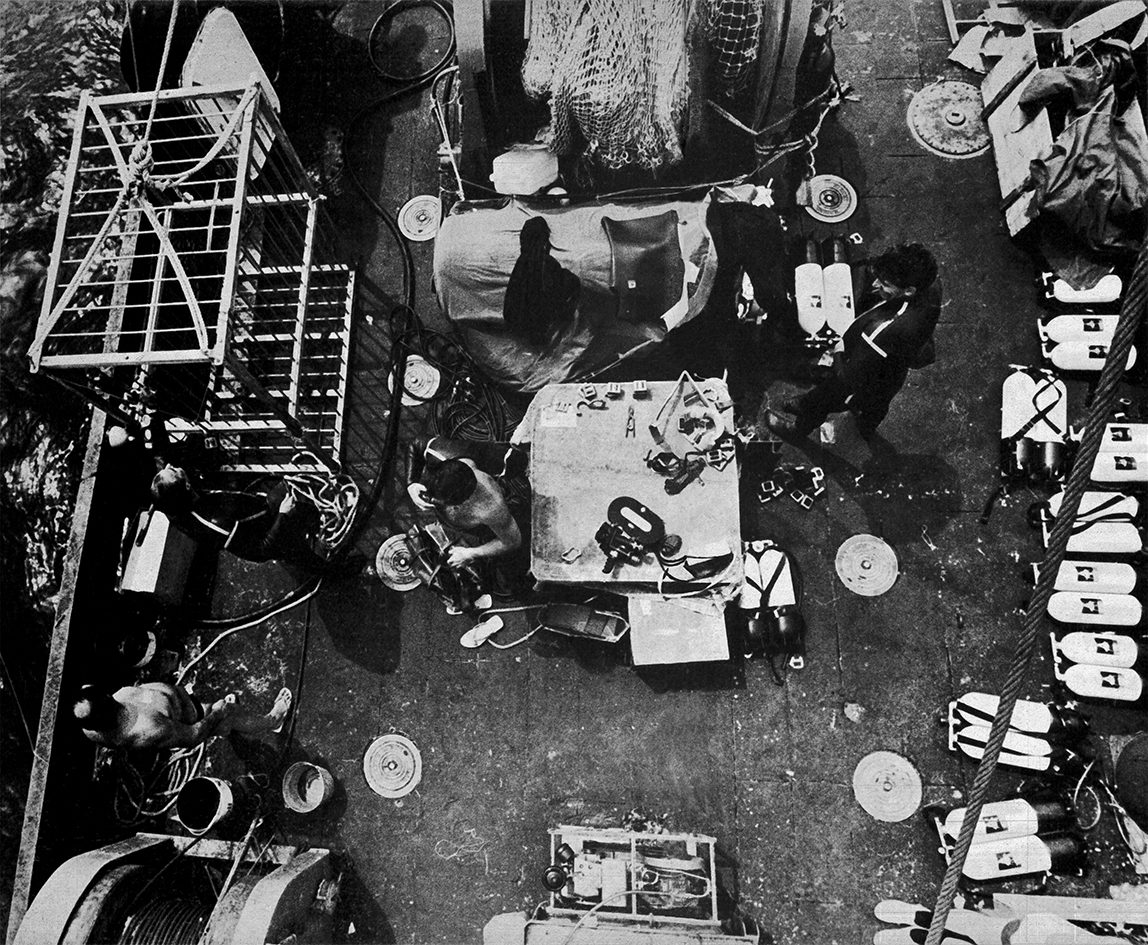
Text and archives research by: Andrea Murdock Alpini
Header image: The dive deck of the Narragansett used by Vailati’s expedition.
Restored Images from the Book “Andrea Doria-74” (2021, new upcoming press by Magenes Editoriale). Courtesy of Luca Maresca
Original images from Ansaldo Archive based in Genoa: Antonio Pacucci, chief curator of Archivio e Fototeca Fondazione Ansaldo
Stefano Carletti is an adventurer, scuba diver, aviator, fisherman, and storyteller. He has told many stories about his great love, the sea; he has searched for hidden treasure on the seabed; and he is a man with a soul that mirrors the many moods of the sea—sometimes calm and placid, and other times stormy and unpredictable. The story of Stefano Carletti’s life is an extraordinary tailor-made adventure illustrated by sea life and narrated with books and articles which have fascinated audiences in the past as well as today. One of the stories he is likely known best for is that of the ship the SS Andrea Doria.
The Andrea Doria was a fascinating ocean liner that sailed from Italy to New York City. She was a symbol of class, taste, and refinement. The ship was launched on June 16, 1951, for its maiden voyage crossing the Atlantic Ocean from Genoa, Italy, to New York City on January 14, 1953. Andrea Doria remains a symbol of a bygone era. To travel on the Andrea Doria was a dream for many—from the anonymous third class passengers to the rich and famous first class voyagers whose names were well known: Magnani and John Ford, Orson Welles, Cary Grant, and Spencer Tracy, amongst others.
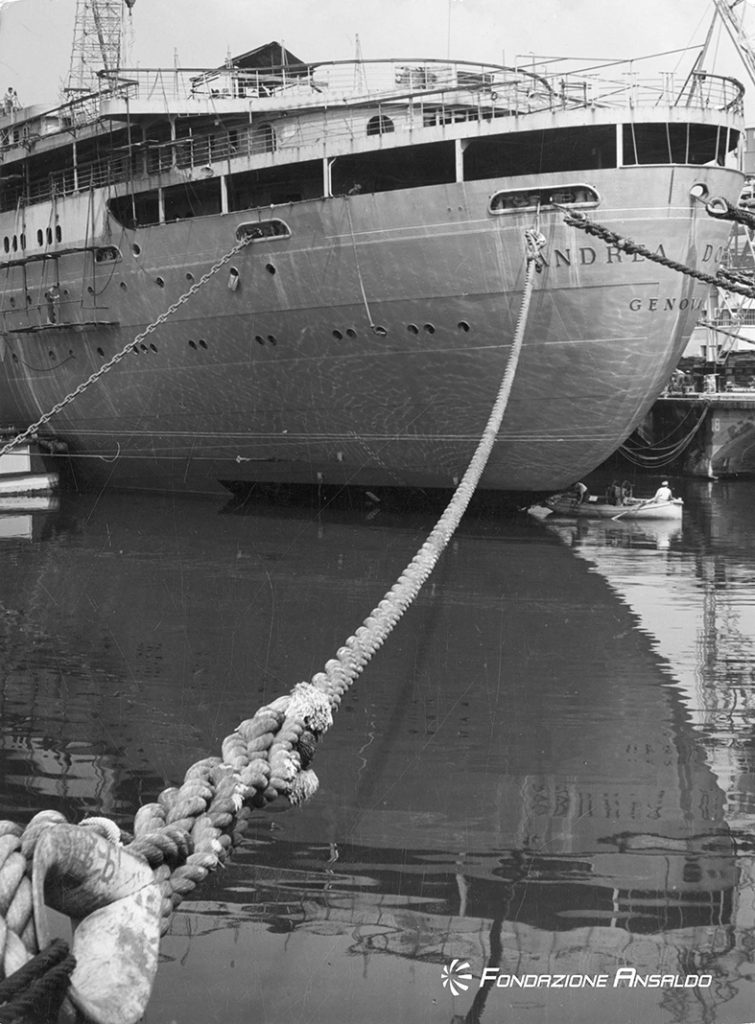
On a damned night—July 26, 1956, to be precise—the magnificent ocean liner sank off the Nantucket shoal after a long, agonizing struggle in the ocean’s current. The cut in her hull made by the MS Stockholm tore apart the right side of the Doria. Commander Piero Calamai was the last man to disembark from the doomed ship, the accident having struck his soul so deeply that he spent the rest of his life obsessed by the event.
As the Atlantic Ocean closed up its waters, surface foam was all that was left of the most beautiful ship ever built in the modern era. Nationwide, TV channels broadcast scenes of the abandoned dreams of a nation as the muddy seabed of the ocean welcomed the magnificent Andrea Doria vessel and transformed it into a myth.
In the summer of 1968, Bruno Vailati, the Italian film maker and scuba diver, gathered a crew of adventurers to travel to the USA to film the wreck of Andrea Doria. They were the second film crew to visit the wreck, though the first led by James Dugan, a colleague of Jacques Cousteau reportedly were not successful. Vailati’s crew was composed of Mimì Dies, Arnaldo Mattei, Al Giddings, and finally Stefano Carletti: the man who made Doria’s wreck immortal. The expedition was “provocatory” and demanding.
Coming back from the expedition to Rome, Stefano Carletti wrote the first book ever about the wreck of the Doria entitled, Andrea Doria -74 (the -74 refers to the depth of the shipwreck in meters). The book is a collection of feelings and rare images caught during scuba dives onboard the expedition’s side ship, Narragansett, where Stefano and the crew spent a month.
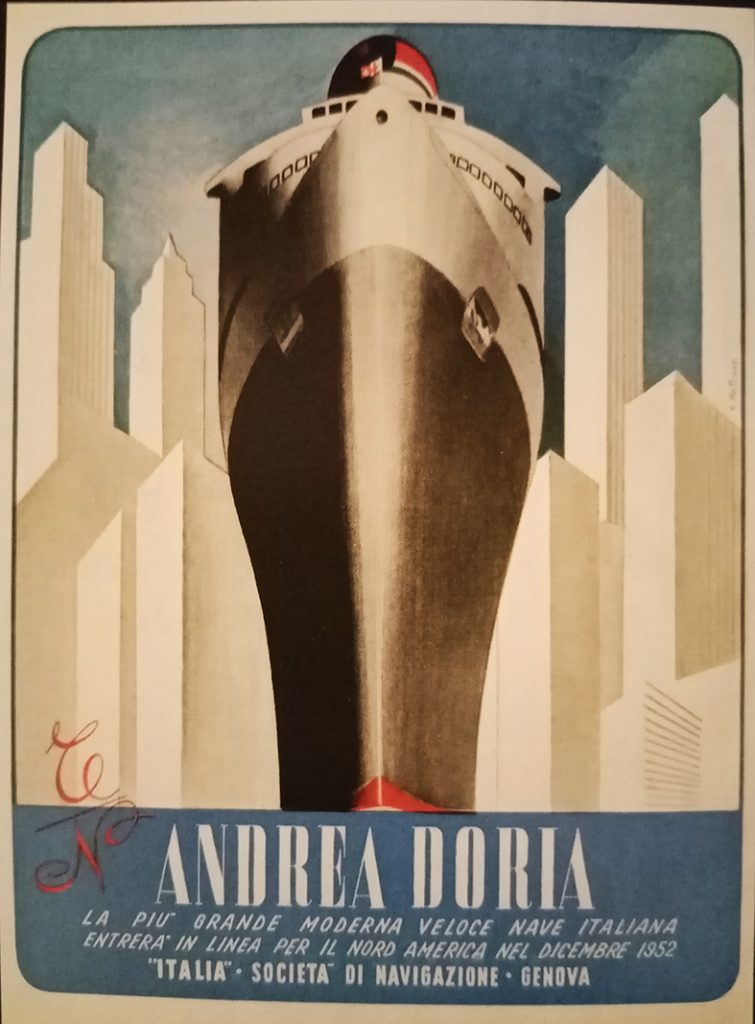
The first edition of the book has now become treasured possession for collectors world-wide, and a new updated edition with restored images, a new introduction from the author, including a critical essay from me (Andrea Murdock Alpini) will be soon available. The book will be a stunning new opportunity for wreckers and historians to own a re-edition of the extraordinary book into their private library.
Similarly, more than fifty years later, Bruno Vailati’s documentary by the same title, Andrea Doria -74, has become a cult classic. Thinking of the Andrea Doria invokes hundreds of emotions for Italian scuba divers. History, for us after all, is a foundation on which we build our lives. In the end, the wreck of the Doria will disappear into the Atlantic seabed, but her story will live on. After all, immortality is a destiny reserved only for the great beauty of the world.
I was honored to be able to interview Stefano and bring his thoughts and words about the Doria, which had been hidden by time, to a new audience.
Interestingly, the Doria was, of course, launched in Genoa in 1951. Two decades later, in 1971, a son of the same city, Fabrizio De André, composed a vinyl album inspired by The Spoon River Anthology from the American poet Edgar Lee Masters. The disc title, “Non al denaro non all’amore nè al cielo” (Nor to money, not to love, or the heaven) well describes the pure spirit of Stefano Carletti. [Listen to the track here] He loved, dived, flew, discovered, wrote, explored, and bequeathed his stories throughout his life. Here is the story that he told to me.
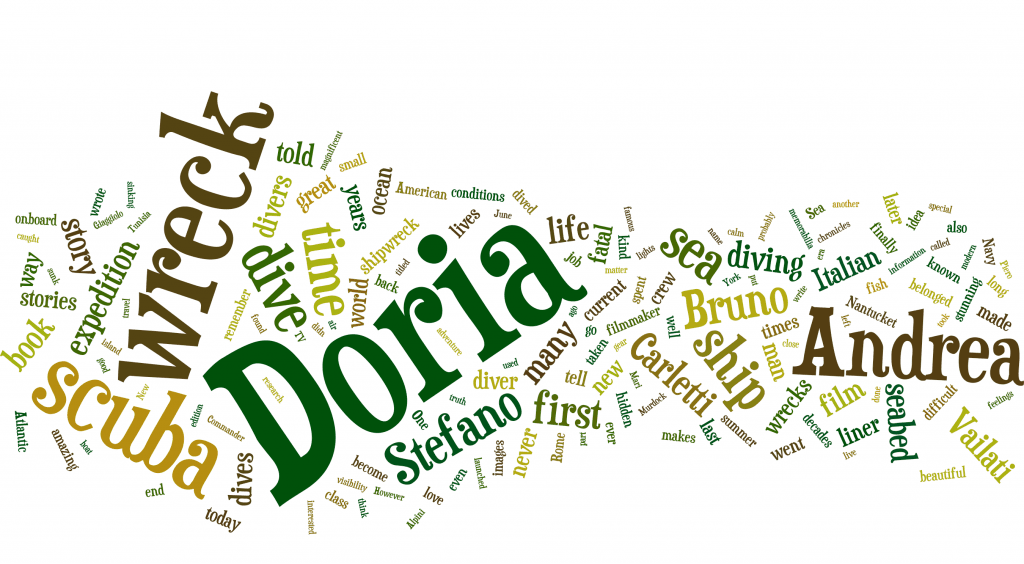
Andrea Murdock Alpini: Who is Stefano Carletti, today?
Stefano Carletti: Stefano Carletti is an eighty-year-old man, a kind of living anecdote. In fact, on May 1 [2021], I will turn 82 years old.
Congratulations! Do you remember the winter evening dinner we had in Rome with Paolo Barone? He granted us a small ink bottle which he had taken from the wreck of Laura C., sunk off Calabria’s shore. Our story started with an ink pen and some stories to be remembered and told.
Of course, I remember that great dinner we had together in Rome. One of the first ice-breaking questions was about my writing practice, a world we both love. Writing is an activity that has been with me all my life, and by the way, one I never gave up to go to the Sea.
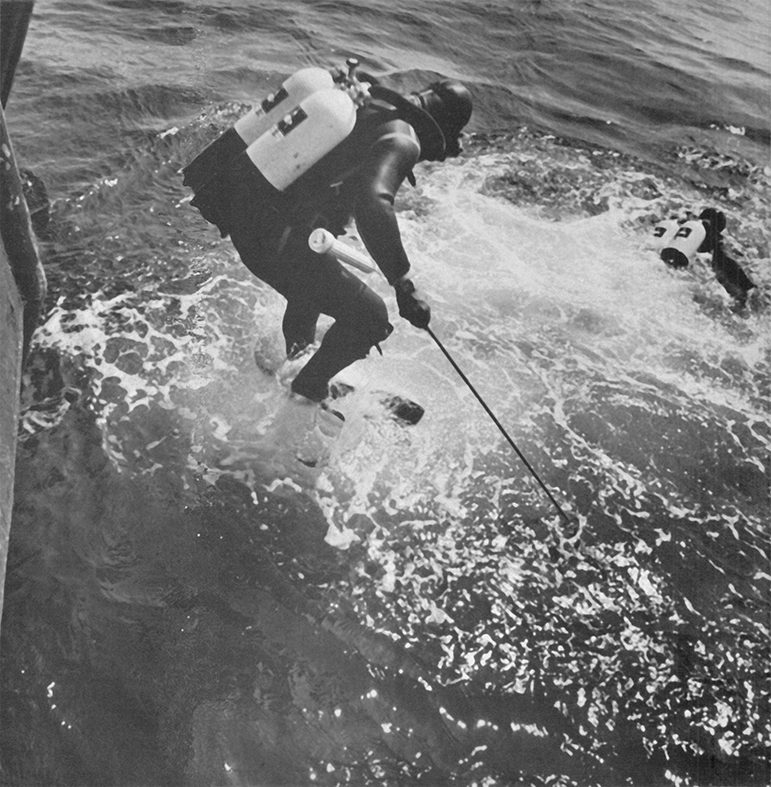
At present, I own a small fishing boat that makes me happy during the summer time, from early June to September. Usually, I sail the central and southern Mediterranean Sea: Sicily, Sardinia, Tunisia, and Libya are favorite spots where I have fished for decades. Fishing is an expression of freedom to me. This activity allows me to return to a special place where I have been going for forty years.
I am also still a scuba diver. I haven’t abandoned diving, I don’t miss an occasion to go scuba diving with good friends. However, I look at the sea with different eyes from the ones I had as a boy.
Before we started our interview you said, “The sea is a kind of amniotic fluid.” Can you tell me what you mean by that?
The sea has a moral and aesthetic sense for me. It has become a primary biological requirement over the years for my state of mind. It enables me to tell sea-based stories in my novels, and in this way I feel that the sea loves me.
Do you think of yourself as a scuba diver or a fish hunter with scuba gear?

The world has changed. Once a long time ago, the main goal of scuba diving was hunting fish. All was born by the limits that freediving imposed at that time, but scuba gear opened a new world, and we went deeper and for a longer time. We had, for the first time, a chance to catch huge-sized fish. We saw ourselves as hunters more than scuba divers.
Fifty-sixty years later I am aware that I have taken advantage of the Sea. My confessions are not those of an old man, for I was aware of what I was doing at those times too, but surviving to live this long has allowed me to admit my transgressions.. I wrote a book some decades ago titled “Naumachos”, and one chapter reads as a sort of regret. By the way, it was another time with different rules.
Sponges, red coral, fishes, ancient Roman urns and wrecks—that was what I hunted in my life to earn my daily bread. We did things that were so close to being illegal that probably today if you tried them, you would go to jail. The sea belonged to all who were crazy enough and brave enough to explore it. Wrecks? Those were considered “Res Nullius” (nothing) as ancient Latin people used to say, wrecks never belonged to anybody. There were no rules on this matter.
So what is a shipwreck to you today?
A wreck, first of all, is a terrible loss. Economical, psychological, and human. The wreck signifies the loss of mortal human beings who end up on the seabed.
How did the idea to film Andrea Doria’s wreck come about?
That is a very funny story that occurred while Bruno Vailati was onboard the Giaggiolo minesweeper, a ship which belonged to the Italian Navy. In 1967, Bruno was sailing onboard the Navy ship and went to Lampedusa Island (a remote and small Italian island close to Tunisia’s shores). At that time, I was living on the island and working as a shark hunter, and you know the Doria is famous for sharks. Bruno Vailati was preparing a set of documentaries about sea life titled, “I Setti Mari” (The Seven Seas) and was interested in filming some wrecks from WWII that I had discovered on the seabed that were unknown.
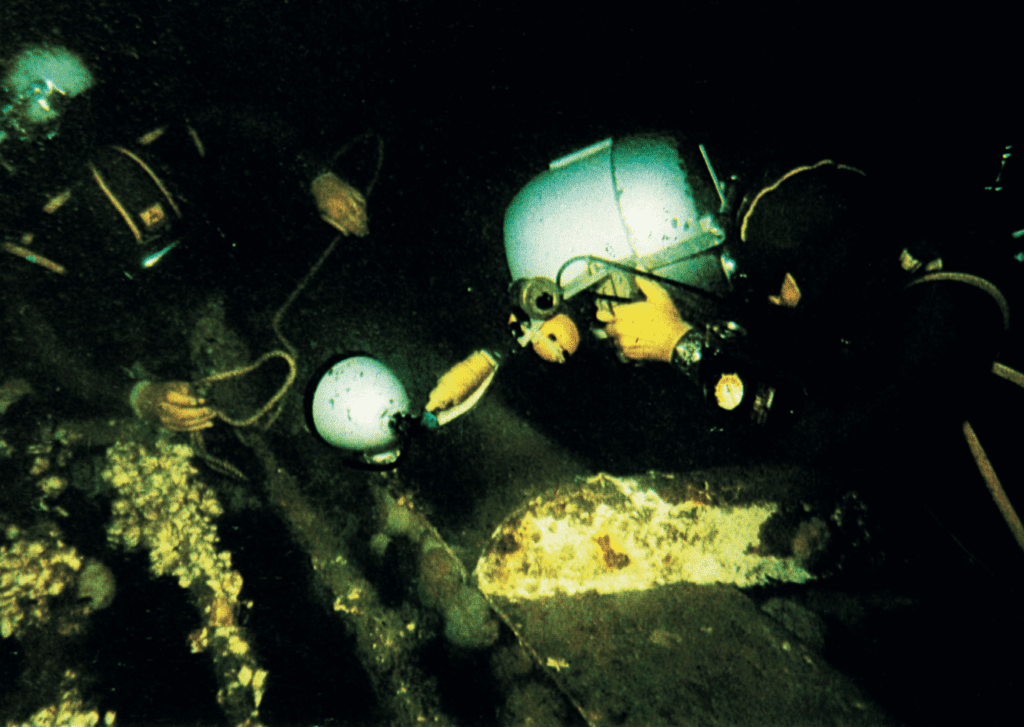
One evening Bruno invited me onboard the Giaggiolo to meet with him. He told me that a group of French explorers who worked with J.Y. Cousteau did not succeed in filming the wreck of the Doria, and had lost an ROV off Nantucket shoal. Intrigued by this little-known information, I played a joke on him and told him that I had a connection with a member of Cousteau’s crew and boasted that “If the Andrea Doria were here, I would be able to break her down, bolt-by-bolt,” as I had dived many, many wrecks
Some months later, during winter time, I saw Bruno and we worked together on the film we had planned since summer. Once again, Bruno Vailati caught me by surprise, “Stefano! Set up a press conference, and we will announce that we are planning an expedition to Doria’s wreck!”
You were surprised?
I was. I didn’t know anything about this beautiful ocean liner except the chronicles of its sinking. I didn’t even have an exact idea of where it was. The Expedition Board asked us to provide accurate historical research and to write a report after each scuba dive we made on the wreck. As I began to work on this matter, I found an air of mystery about the sinking and the wreck.
We had the Doria’s Loran coordinates which were taken by Doria’s Commander Piero Calamai, and we had been secreted by the American Coast Guard and Marine Navy. However, most of the information I found about the wreck was inaccurate; articles were in contradiction with one another, and a lot of the details were wrong. We spent almost a week at sea trying to get a signal from the wreck, while calculating currents, fog and wind, before finding the Doria on the bottom.
I believed the whole story must be told. Our expedition was known to history as a large-scale expedition, but in truth we sailed only for a great adventure.
So how did you feel about the expedition? Were you drawn by the Doria or the shipwreck itself?
The Andrea Doria expedition was born as kind of an afterthought. I merely followed the intention of the filmmaker, Bruno Vailati, to film an Italian wreck that had sunk in difficult conditions—not only the sea’s surface conditions, but also the surrounding waters. All contributed to the factors that piqued our interest about the wreck.
Our goal was to produce good quality images of the luxury liner on the seabed as an episode for the “I Sette Mari” Italian TV series. At the time, we were not yet fascinated by the Doria; we simply went to the US to do a job. Emotions initially played little part in our trip. We were not engaged with either the ship or the wreck.
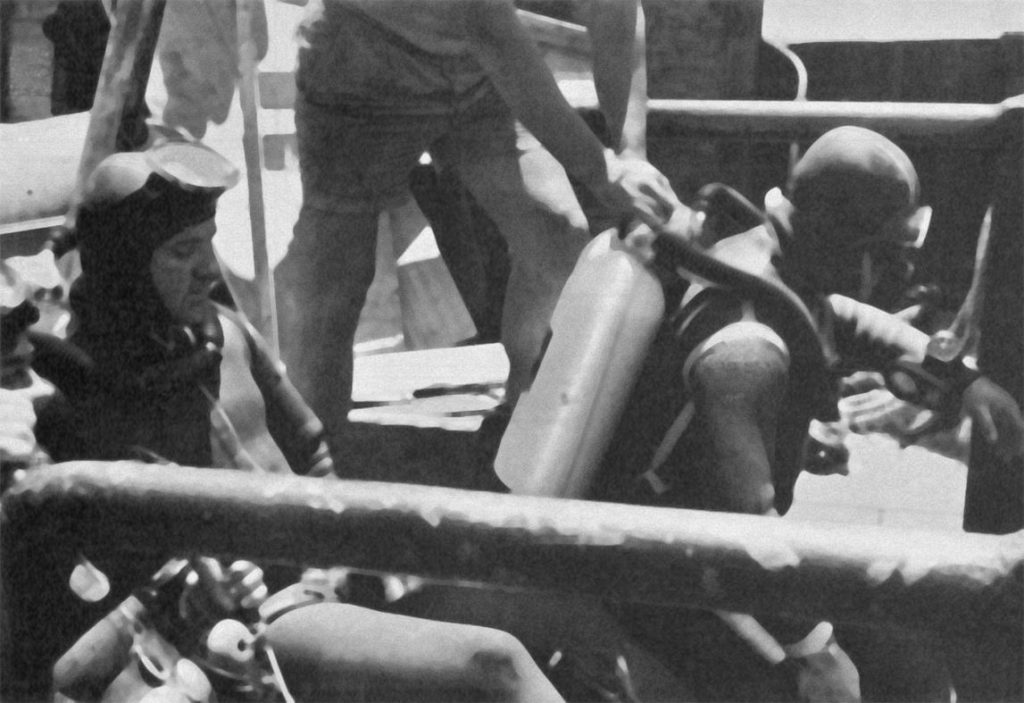
Every time I watch the movie Pulp Fiction I love the way Samuel L. Jackson says, “Hamburger: The cornerstone of any nutritious breakfast!” Stefano, nowadays, as I’m sure you know, decompression diving is to tech diving, what hamburgers were to Jackson’s Pulp Fiction breakfast. LOL! Please tell me a little about your nutritious decompression diving.
Ha! Well Andrea, first I do remember our expedition breakfasts onboard the Narragansett quite well. I can tell you we had a black coffee, milk, and a healthy Italian breakfast prepared by Chef Mimì Dies and his assistant. After breakfast, we made two consecutive dives on the wreck of the Doria, which we planned according to the tides, fog, swell, and current.
We dived on air with 12-liter twinsets, wetsuits, deco tables, and watches with a bottom timer. We didn’t carry any deco cylinders. I used to drag a hemp rope to the bottom as a main line to find the way back to the boat. Typically, we spent 20 minutes on bottom each dive with an average depth of 55-75m (179-245 ft), and our decompression times varied from 35-45 minutes breathing air and later oxygen, which was supplied by the surface at 9 meters, 6 meters and 3 meters. Sometimes we spent that deco time inside a shark cage we built.
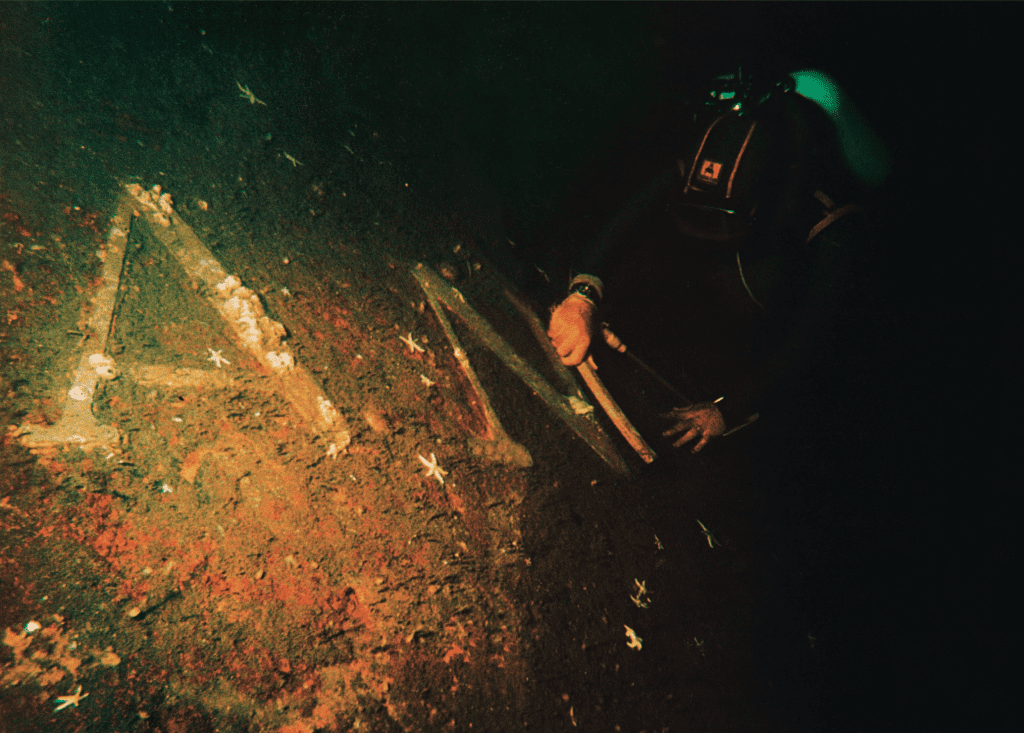
Diving the Doria was hard; the ocean was cold, visibility was often poor, and our lamps seemed like candles in the night. Of course we were also carrying heavy movie equipment. We recorded more than 2km of film, and made thousands of photos. We each spent about 21 hours diving the wreck in the month we were there! We had a great expedition.
The Doria has been called a death wreck, a fatal scuba dive, the Mount Everest of scuba diving. What is your perspective?
Today, you can see videos on YouTube of scuba divers diving the wreck of the Doria. Most of them carry large amounts of equipment they may consider necessary; whereas simpler, more streamlined technology would be more efficient and might even save lives. The excess equipment itself makes Doria’s dive dangerous, not the wreck.
I’m also sure, in some cases, inadequate skills and lack of fitness put many divers at risk. It’s true, too, that so many divers are interested in retrieving artifacts from inside the wreck, which puts them in danger. They have transformed a mid-level difficult dive into a “fatal dive.”
And that’s why it has a bad reputation?
The Andrea Doria does not deserve to fill the black chronicles of scuba diving. Too many poor souls have lost their lives, which is why it has been called “fatal dive.” I trust that the Doria is not a “fatal” wreck, and not even a difficult dive; however I think it is necessary to rethink the current way to approach diving this amazing wreck. If this were done, lives could probably be saved. A dive becomes “fatal” if the scuba diver makes it so. The wreck has no responsibility at all.
The Andrea Doria, what an amazing fate; from Dolce Vita’s luxury liner to a shipwreck. People say that today there are more Doria artifacts stored in American households than there are on the Nantucket shoals seabed. Each year the Doria is cannibalized by scuba divers from around the world. Did you keep any memorabilia from your exploration?
I have never removed any relevant memorabilia from the Doria’s wreck. Most of our scuba dives took place in the exterior part of the ship. I have gone inside the wreck only a very few times. I went to the commander’s deck, and I remember the helm and the stunning windows. To tell you the truth, I dived the Doria to tell a story, to write a book, and to make a film—that is to do a job—not to gather souvenirs. During my dives, I took just five or six First Class forks from the Doria’s dining room, and I gave them all to special friends. All I have left are my memories.

At the end of the final dive, filmmaker Bruno Vailati said, “We turned back and we looked at her.” For the first time he appears melancholic. It seemed like the great filmmaker finally put aside the job and revealed his feelings about the ship.
The last dive we made was during incredibly flat and calm sea conditions with no current. The visibility for the first time was stunning. I can say it was the only dive I had on Doria with crystal-clear visibility. It seemed that the wreck showed herself to us. During the previous 21 dives we had never really seen the Andrea Doria; we had only an idea of it because the strong current and the cold water with tons of plankton had hidden the wreck from our gaze. In fact, the majority of our dives were more tactile than visual.
Those times, what was in front of our eyes could have been a common ship. But on our last dive, when I brushed away the silt from her beautiful name letter-by-letter, I will never forget when the name “Andrea Doria” finally appeared to me. Yes, it is true, when we did the last amazing dive, we turned in awe, and said, “Arriverderci” to the ship.

Dive Deeper:
LA Times (1990): Bruno Vailati; Producer Known for Sea Footage
Bruno Vailati’s Andrea Doria-74 (In Italiano)
Andrea Doria-74 is a 1970 documentary directed by Bruno Vailati, a film director specializing in marine and underwater films. The film was the first documentary able to show, in an organic and complete way, the wreck of the Italian ship Andrea Doria, which sank 14 years earlier. He received the David di Donatello Critics’ Award and the “Jury Prize at the Paris Film Technology Congress.” Filming took place in July 1968, during 21 dives on the wreck, with a diving group composed of Bruno Vailati, Stefano Carletti and Al Giddings, while the surface assistance group was composed of Mimì Dies, Arnaldo Mattei and the crew. ship Narragansett, chartered for the purpose. Source: Wikipedia.
Newsreel: Divers Go Down to Andrea Doria One Week After Sinking
Alert Diver (2016): Remembering the Andrea Doria by Michael Menduno
Andrea Murdock Alpini is a TDI and CMAS technical trimix and advanced wreck-overhead instructor based in Italy. He is fascinated by deep wrecks, historical research, decompression studies, caves, filming, and writing. He holds a Master’s degree in Architecture and an MBA in Economics for The Arts. Andrea is also the founder of Phy Diving Equipment. His life revolves around teaching open circuit scuba diving, conducting expeditions, developing gear, and writing essays about his philosophy of wreck and cave diving. Recently he published his first book entitled, Deep Blue: storie di relitti e luoghi insoliti.



















